Bismi Llahir Rahmanir Rahim
by Naielah Ackbarali
The Prophet ﷺ said: “A Muslim does not perform ablution (wuḍūʾ) and perfect it, and offer prayer, except that he will be forgiven (for his sins) during the period from one prayer to the next.” [Bukhari]
Perfecting the ablution (wuḍūʾ) means to perform it completely with its sunna actions and etiquettes.
AlhamduliLlah, through striving to beautify our worship and ensuring that it is done correctly, our sins will be washed away.
Other narrations indicate that the gates of Paradise are opened for the person who perfects their ablution (wuḍūʾ).
This is an encouragement for all Muslims to be avid to offer the best ablution (wuḍūʾ) possible to Allah Most High.
The following is a step-by-step guide for both men and women of how to make ablution (wuḍūʾ) in the most complete form, as outlined by scholars from the Hanafi madhhab.
Before Beginning:
- Remove any filth from one’s body or clothes, like blood, urine, feces, or the like.
- Remove any barrier that would prevent water from reaching the skin or hair, like tight rings, nail polish, dried dough, paint, fake eyelashes, fake nails, or waterproof makeup.
Step 1: Start by intending to make ablution (wudu).
Intend in the heart to make ablution (wuḍūʾ) or to lift ritual impurity.

Step 2: Wash the hands three times.
While saying ‘Bismi Llahir Rahmanir Rahim’ in a lowered voice, wash both hands up to – and including – the wrists three times.
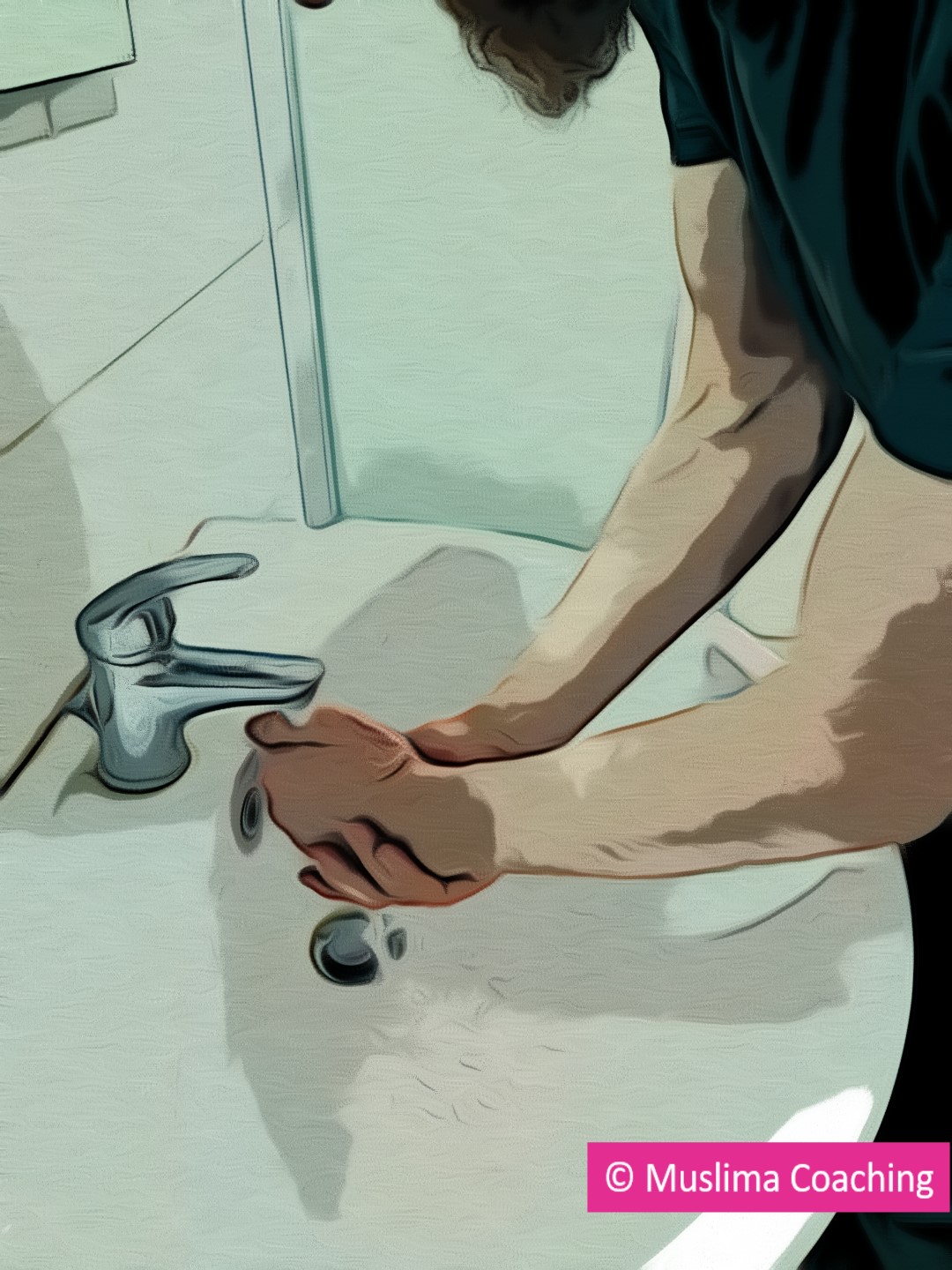
Step 3: Wash the mouth three times.
Take a handful of water with the right hand and rinse the mouth completely. Spit the water out. Do this three times using three separate handfuls of water.
It is sunna to exaggerate the washing of the mouth for a person who is not fasting. To exaggerate, make the water reach the back of the mouth towards the beginning of the throat.
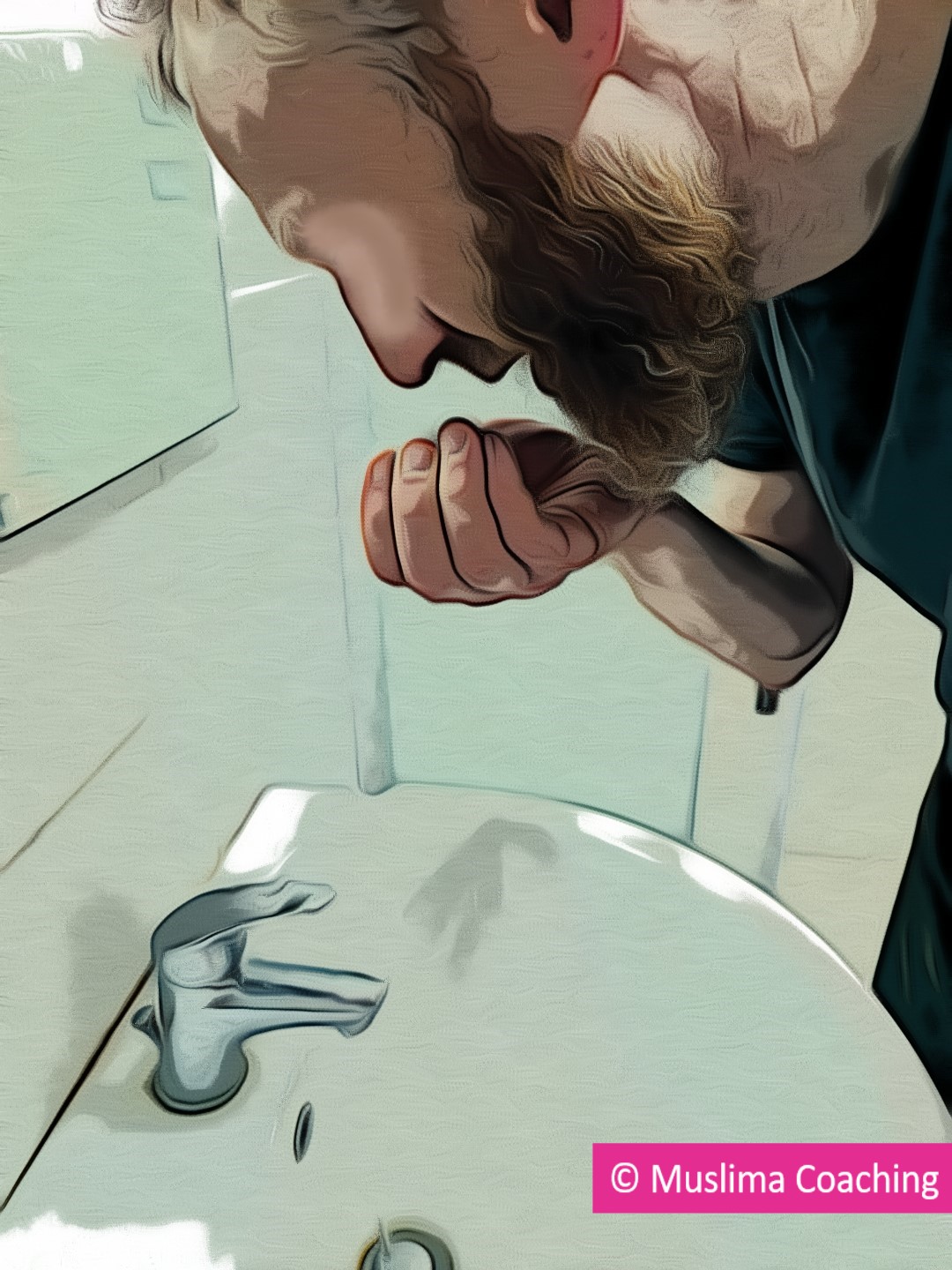
Step 4: Clean the teeth.
Using a siwak, clean the teeth at the time of washing the mouth.
If one does not have a siwak, use a toothbrush. If a toothbrush is not available, use one’s fingers.
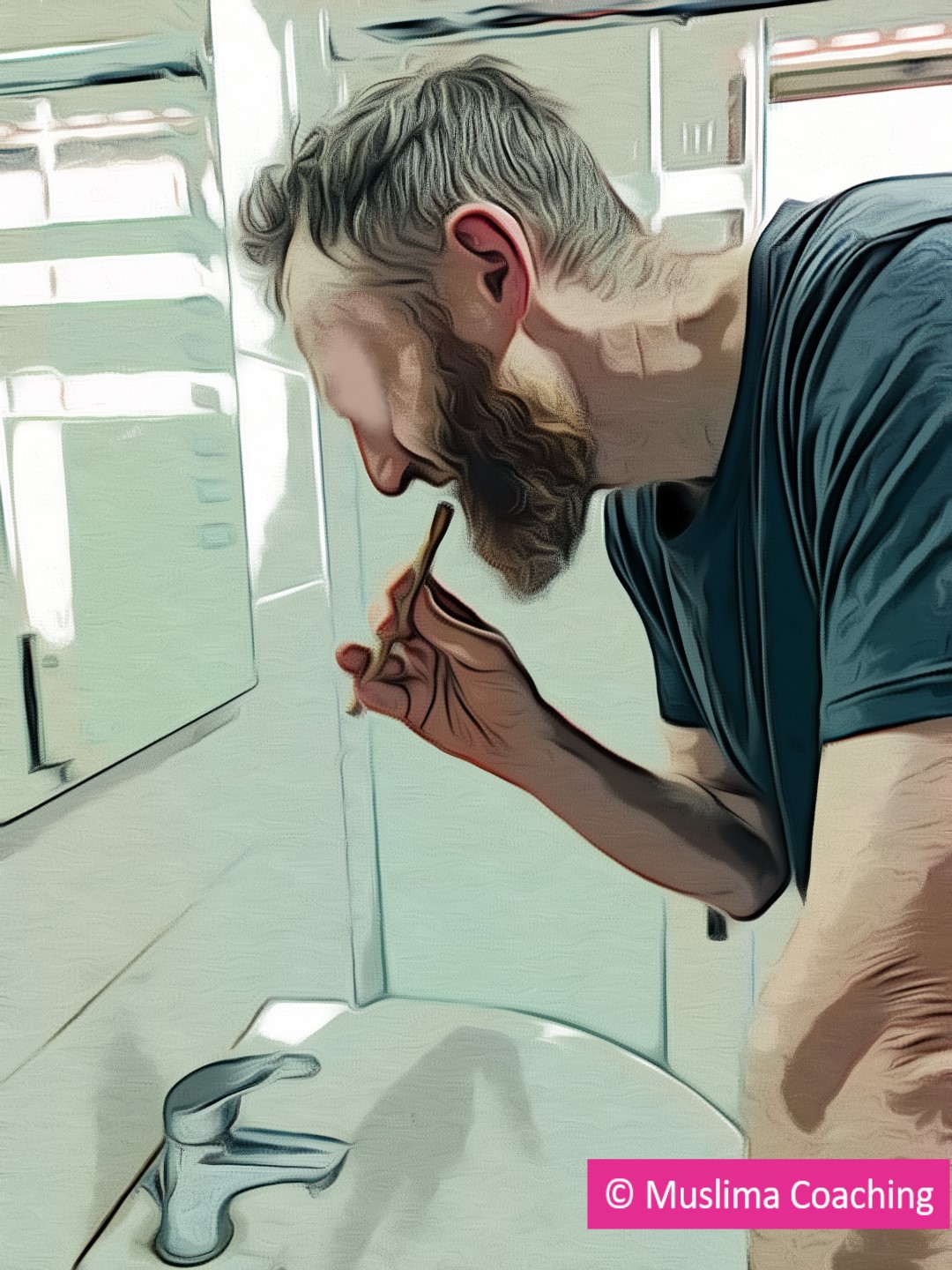
Step 5: Rinse the nose three times.
Take a handful of water with the right hand and sniff the water into the nose. Using the left hand, pinch the nose gently such that the water is pushed out. Do this three times using three separate handfuls of water.
It is sunna to exaggerate the rinsing of the nose for a person who is not fasting. To exaggerate, sniff the water up past the soft part of the nose.
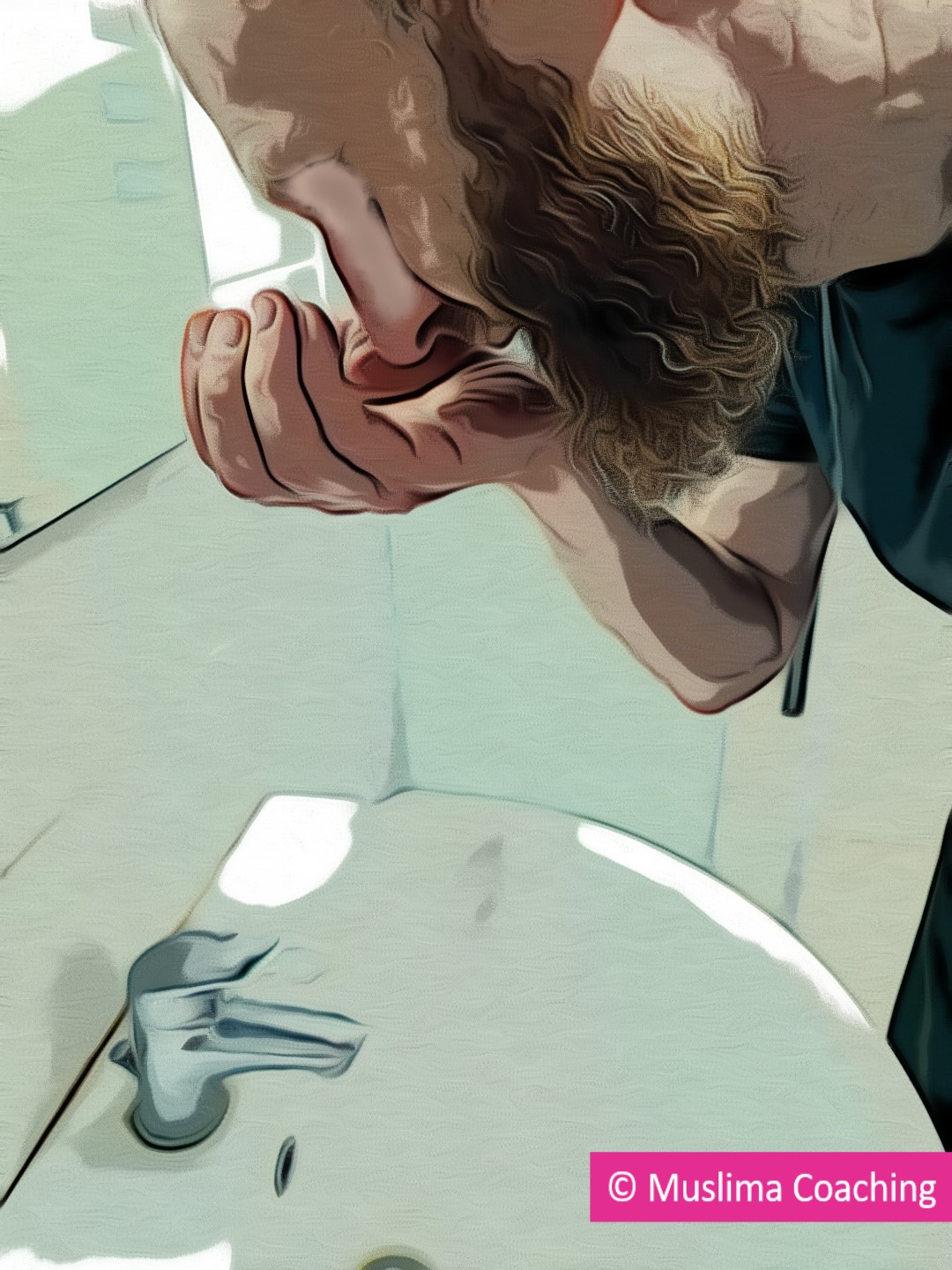
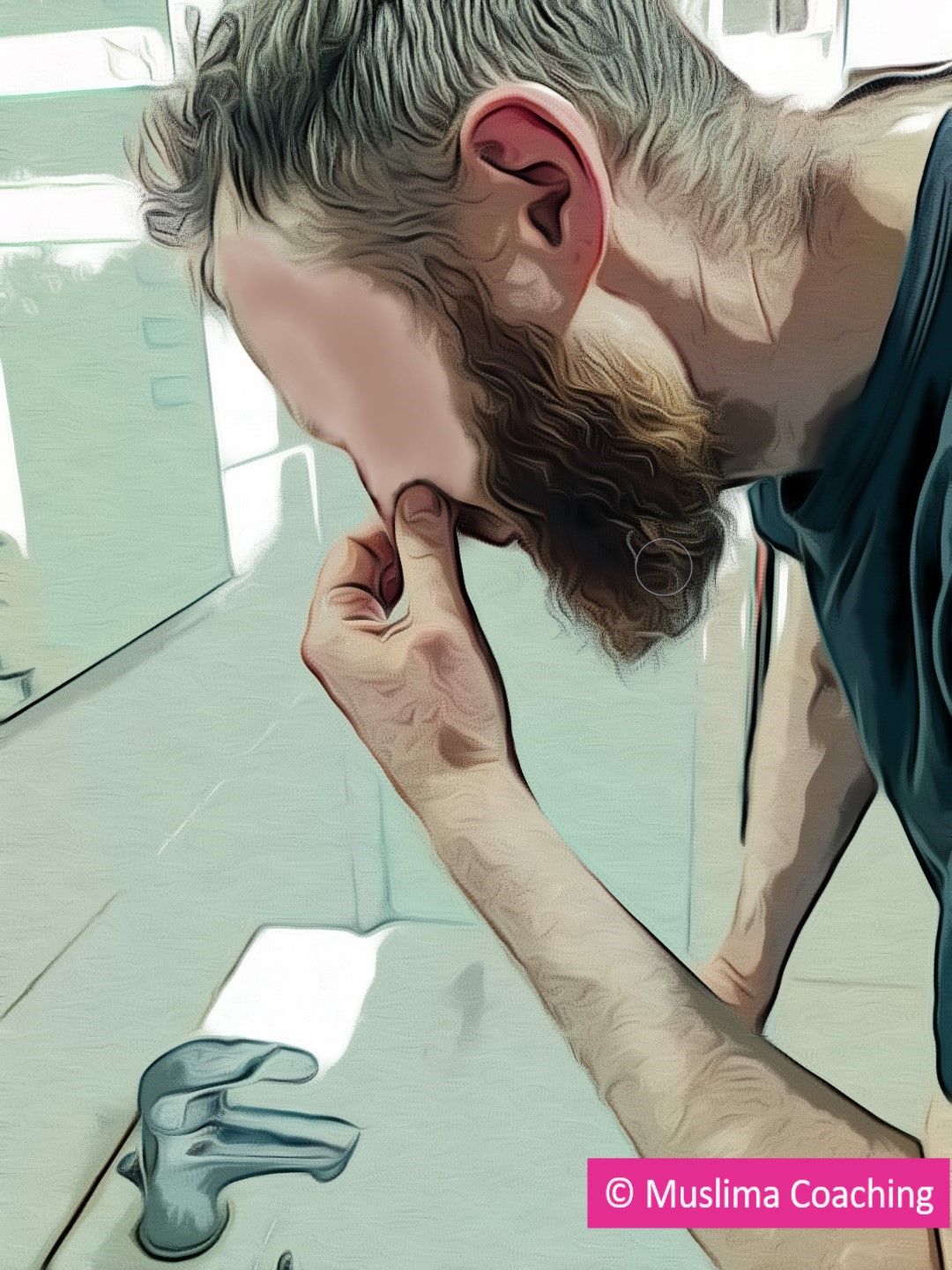
Step 6: Wash the entire face three times.
Using both hands, take a handful of water and wash the entire face.
Let the water first reach the top of the forehead where the hairline normally starts, and then move the hands along the face to ensure that the water flows to all parts of the face.
Repeat three times, each time taking care to wash the face completely.
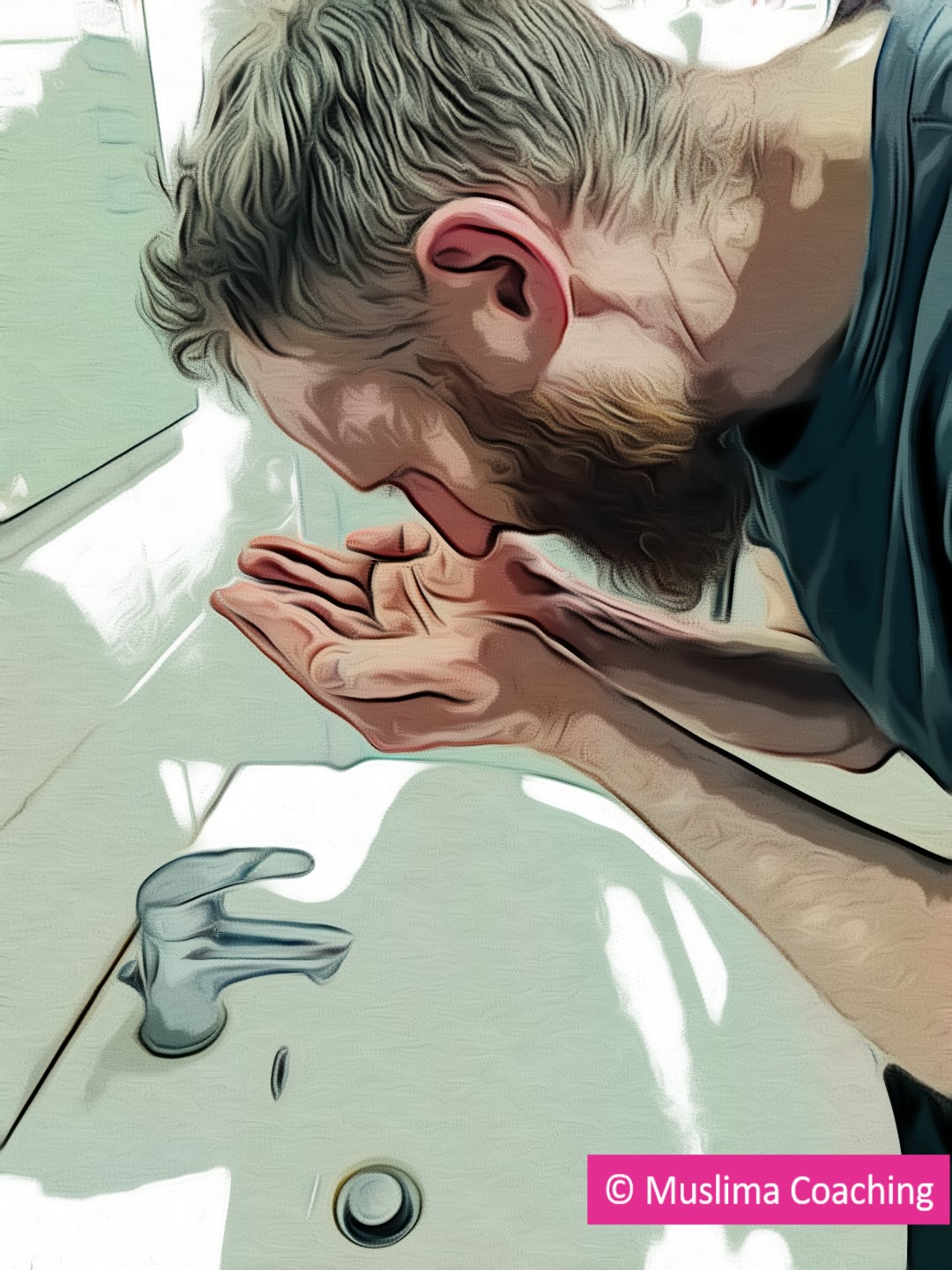
It is obligatory to wash everything from the face that is included from the hairline to below the chin, and from earlobe to earlobe. The water must reach all parts of the face, excluding the inside of the eyes.
If any hair grows on the face – like sideburns, eyebrows, or beard hair – it is a condition that the water reach the top of the hair if it is so thick that the skin cannot be seen underneath it. Otherwise, if the hair is thin or in patches such that the skin can be seen, the water must reach the actual skin.
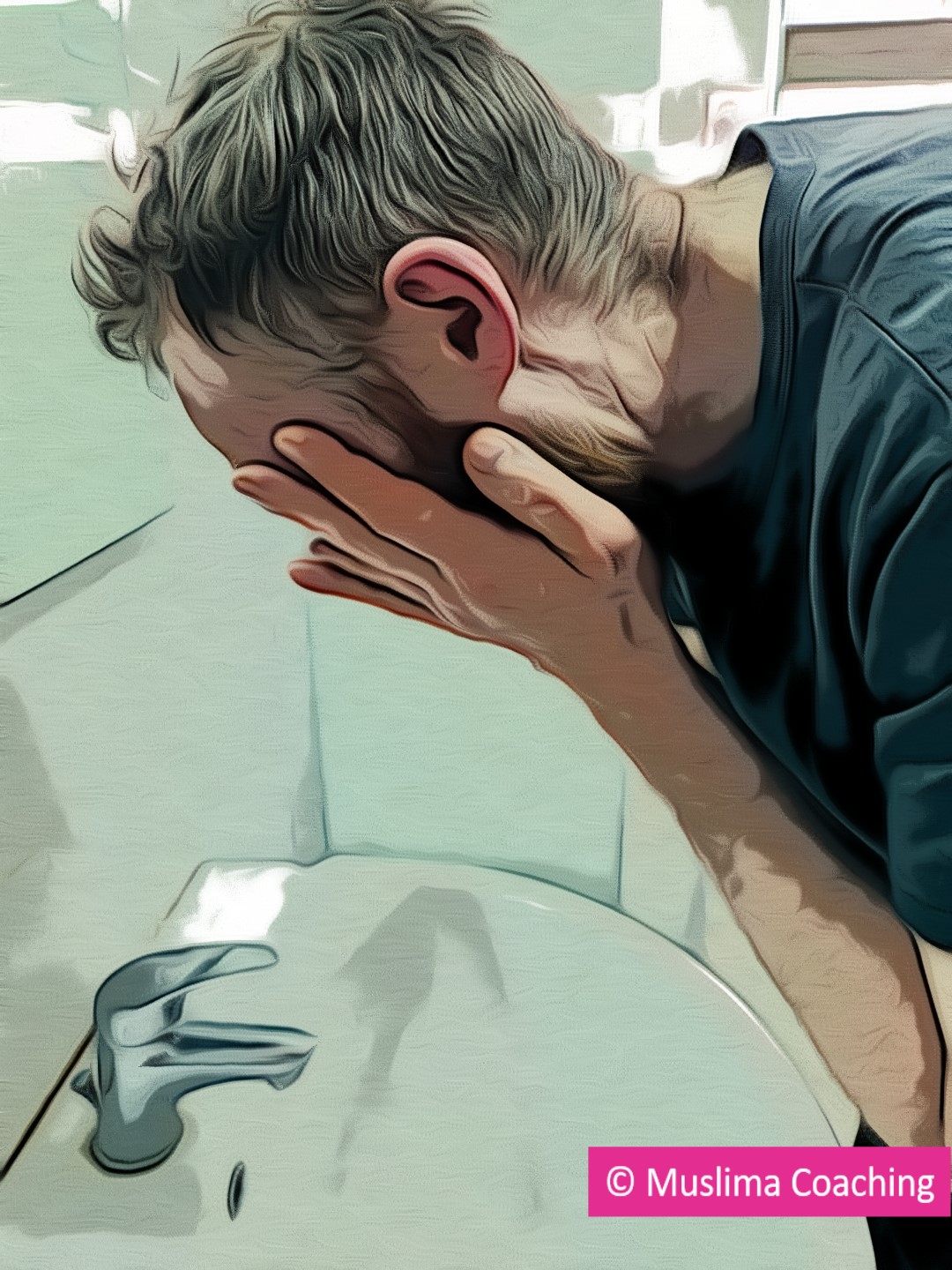
Step 7: Interlace the beard with water (men only).
Wet the right hand and push the wetted fingers through the beard hair, starting from the bottom of the jaw and moving up towards the chin. Interlacing the beard should not be done while a man is in a state of ihram for hajj or umrah.
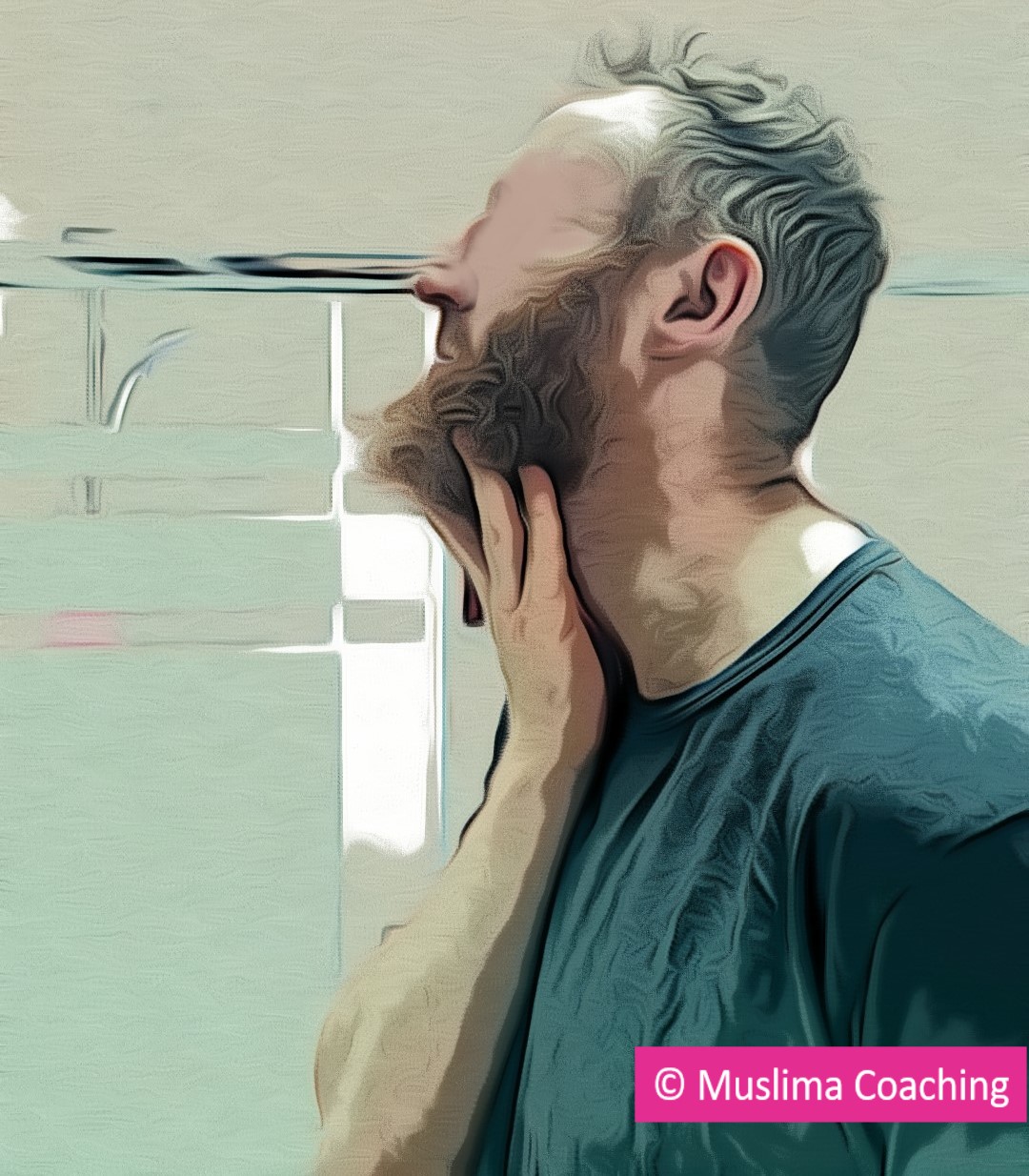
Step 8: Wash the right arm three times.
Start at the fingertips and wash up to – and including – the elbow of the right arm. Move the left hand along the arm to ensure that the water flows to all parts of the arm.
Repeat three times, each time taking care to wash the arm completely.
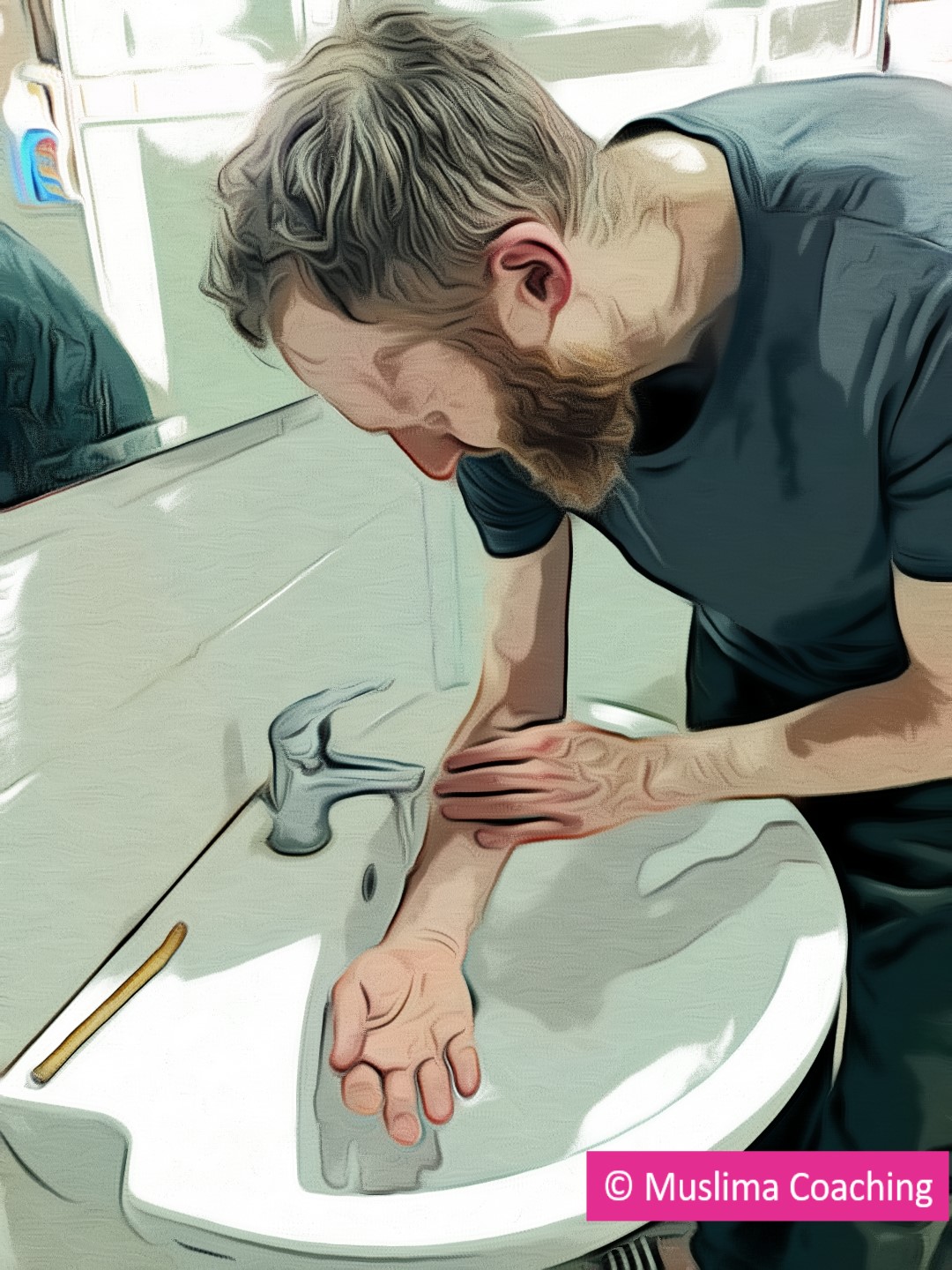
Step 9: Wash the left arm three times.
Start at the fingertips and wash up to – and including – the elbow of the left arm. Move the right hand along the arm to ensure that the water flows to all parts of the arm.
Repeat three times, each time taking care to wash the arm completely.
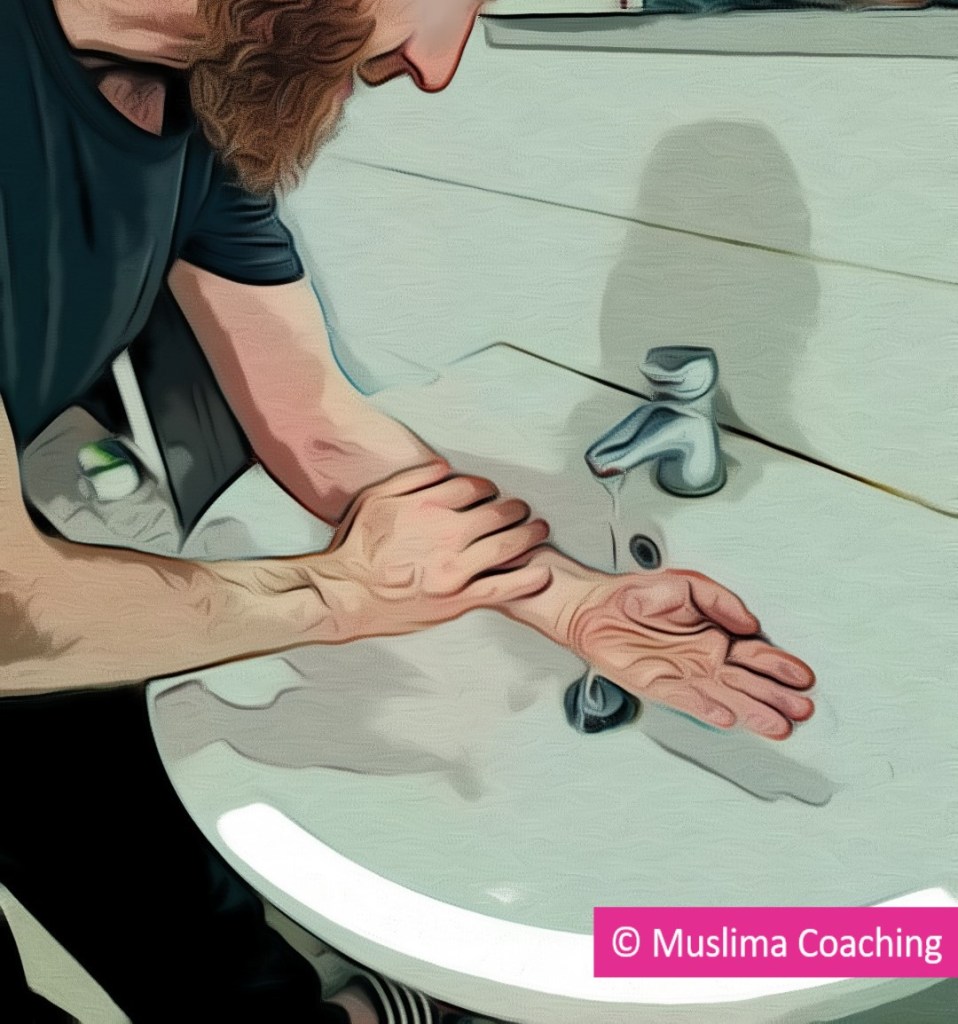
Step 10: Interlace the fingers.
Join the two wetted hands together and interlace the fingers.
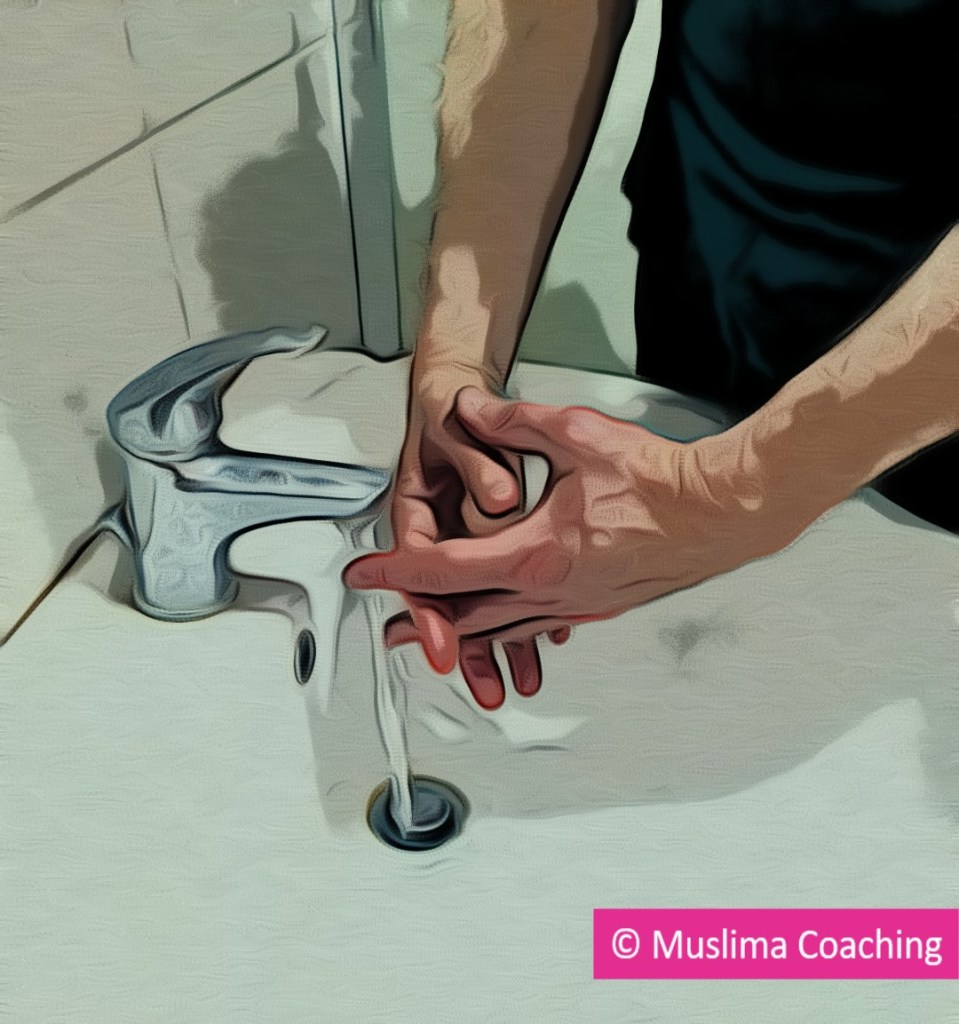
Step 11: Wipe the entire head once.
Wet the hands with new water and wipe the entire head. Start at the front of the head and move the hands towards the back. Only do once.

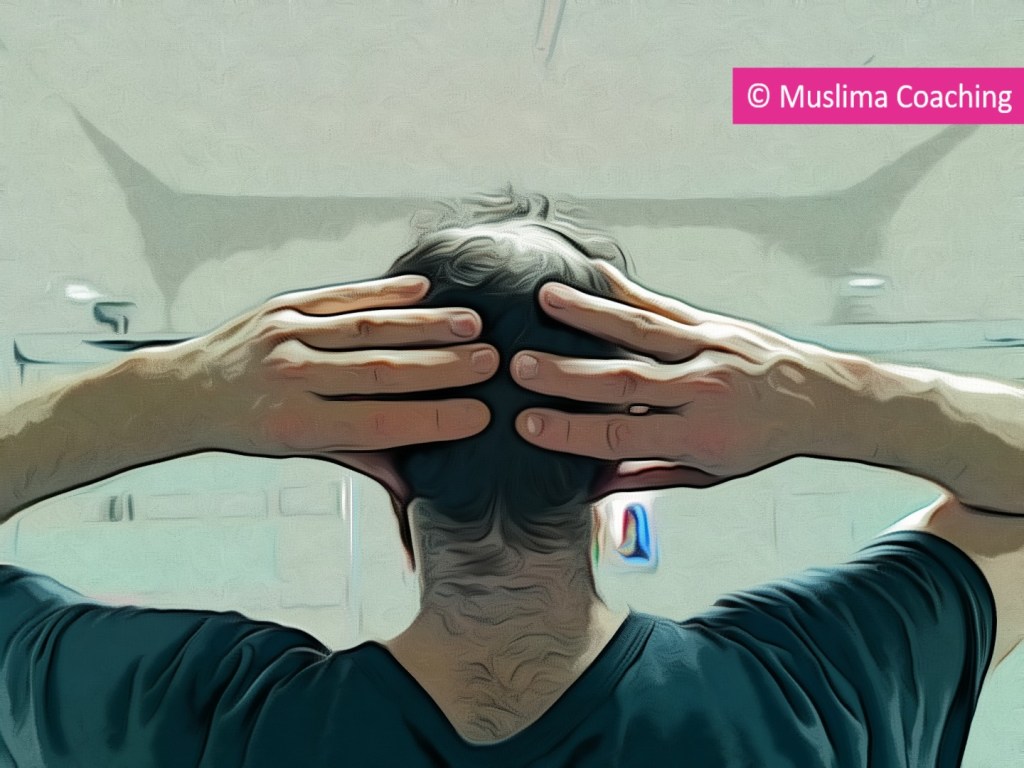
Step 12: Wipe the ears.
With the same wetted hands used for wiping the head, wipe the two ears at the same time.
Use the thumb to wipe the outside of the ears and the index finger to wipe the inside of the ears. The left hand is used for the left ear and the right hand is used for the right ear.
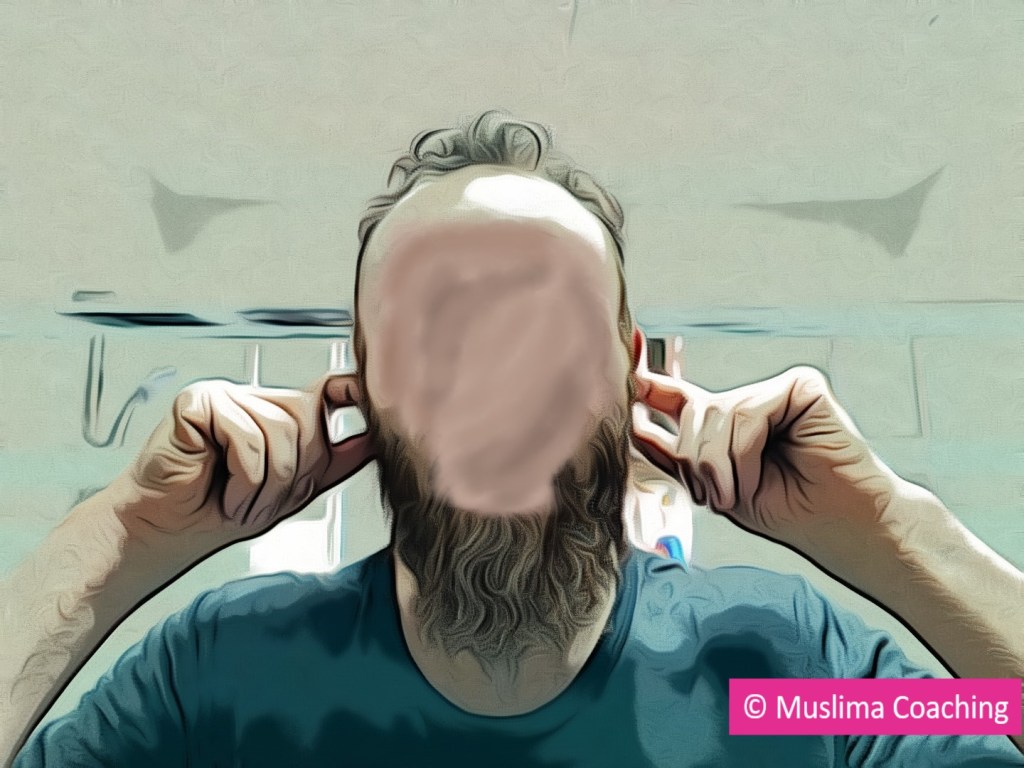
Then, insert the pinky fingers into the ear canal at the same time. The left pinky finger is inserted in the left ear and right pinky finger is inserted into the right ear.

Step 13: Wipe the back of the neck.
With the same wetted hands used for wiping the head, wipe the back of the neck with the back of one’s hands.
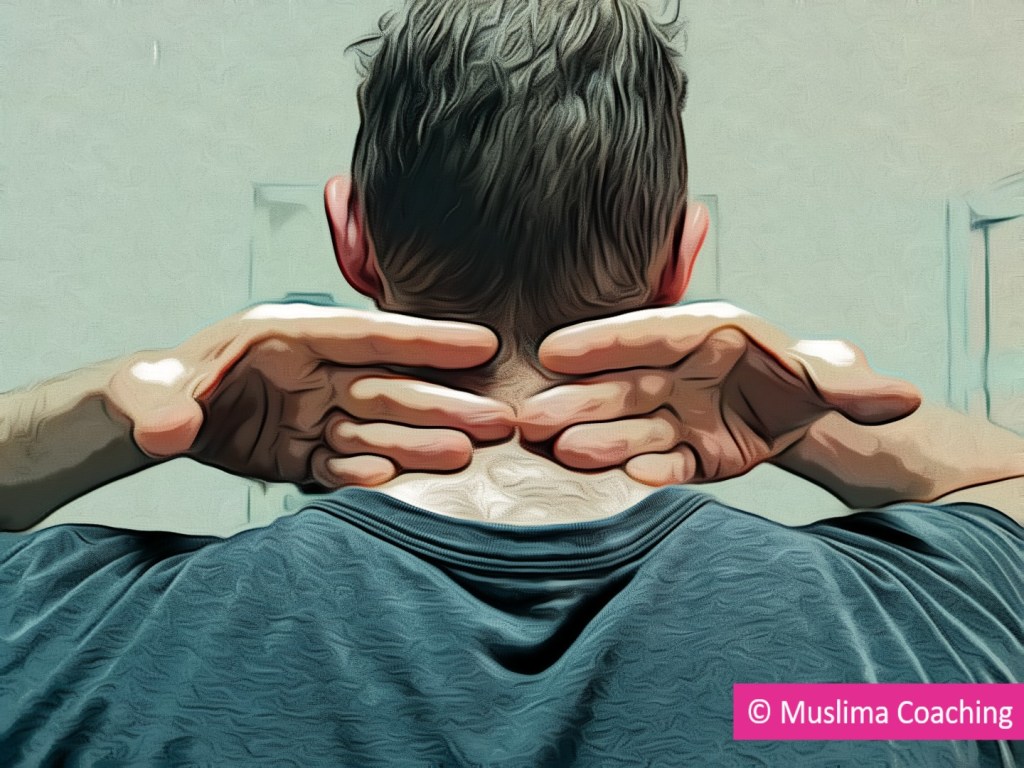
Step 14: Wash the right foot three times.
Wash the right foot up to – and including – the ankle. Start with the toes and move the left hand along the foot to ensure that the water flows to all parts of the foot.
Interlace the toes using the pinky finger of the left hand. Start with the smallest toe and move towards the big toe.
Repeat three times, each time taking care to wash the foot completely.

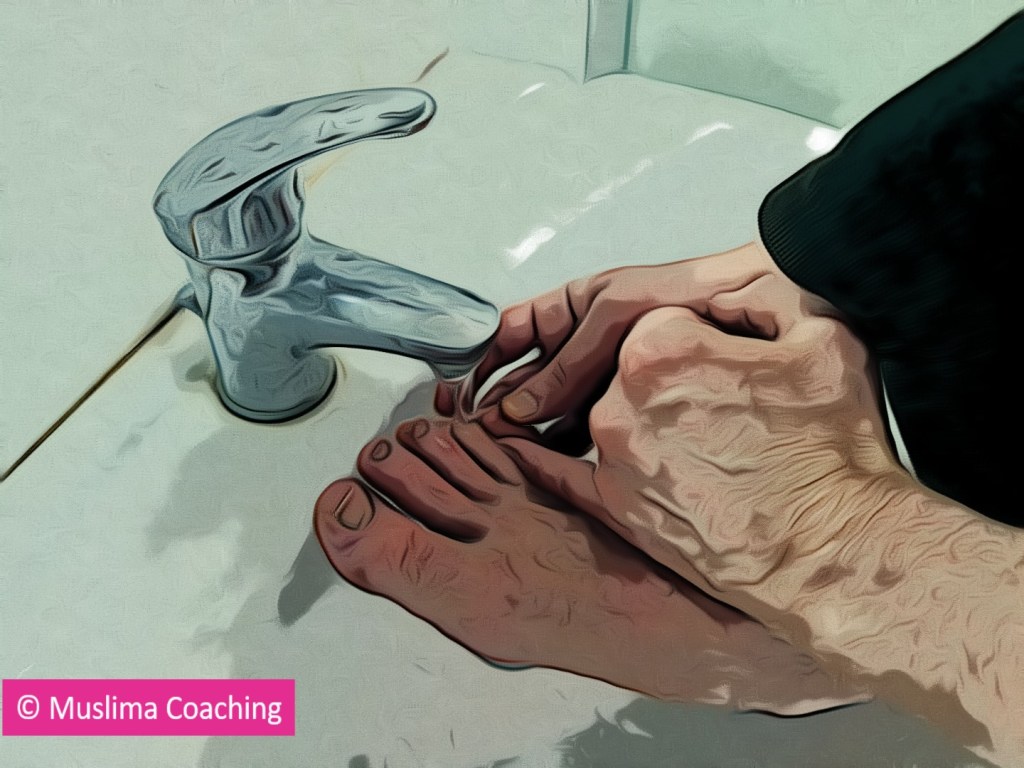
Step 15: Wash the left foot three times.
Wash the left foot up to – and including – the ankle. Start with the toes and move the left hand along the foot to ensure that the water flows to all parts of the foot.
Interlace the toes using the pinky finger of the left hand. Start with the biggest toe and move towards the smallest toe.
Repeat three times, each time taking care to wash the foot completely.
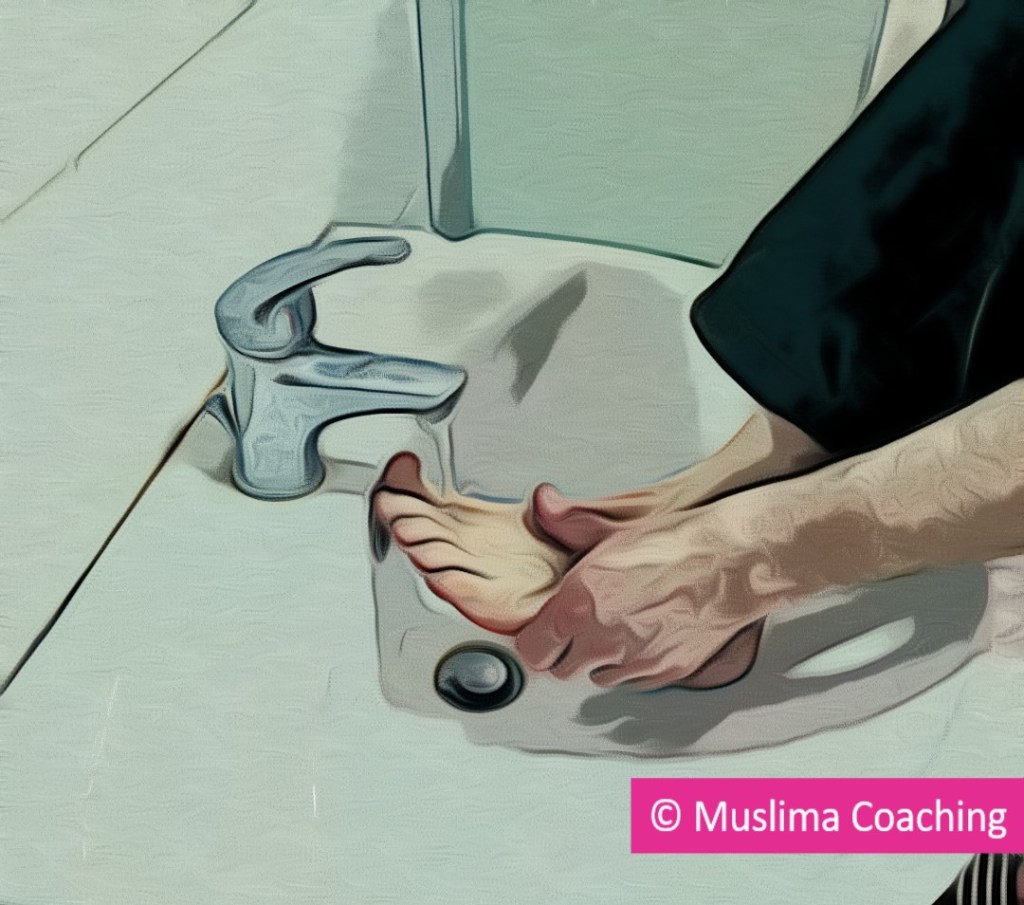
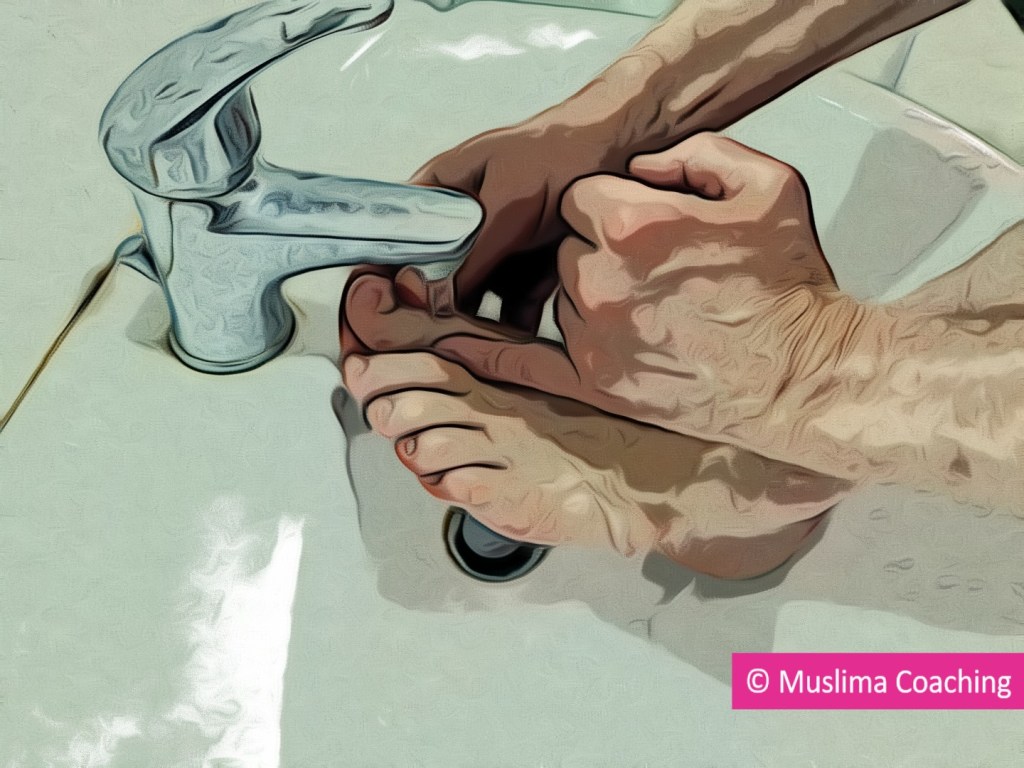
Step 16: Say the supplication for finishing.
أَشْهَدُ أَنْ لَا إِلَهَ إلَّا اللهُ وَحْدَهُ لَا شَرِيكَ لَهُ، وَأَشْهَدُ أَنَّ مُحَمَّداً عَبْدُهُ وَرَسُولُهُ
اللَّهُمَّ اجْعَلْنِي مِنَ التَّوَّابِينَ وَاجْعَلْنِي مِنَ الْمُتَطَهِّرِينَ
“I bear witness that none has the right to be worshipped but Allah alone, Who has no partner; and I bear witness that Muhammad is His slave and His Messenger. O Allah, make me among those who turn to You in repentance, and make me among those who are purified.”
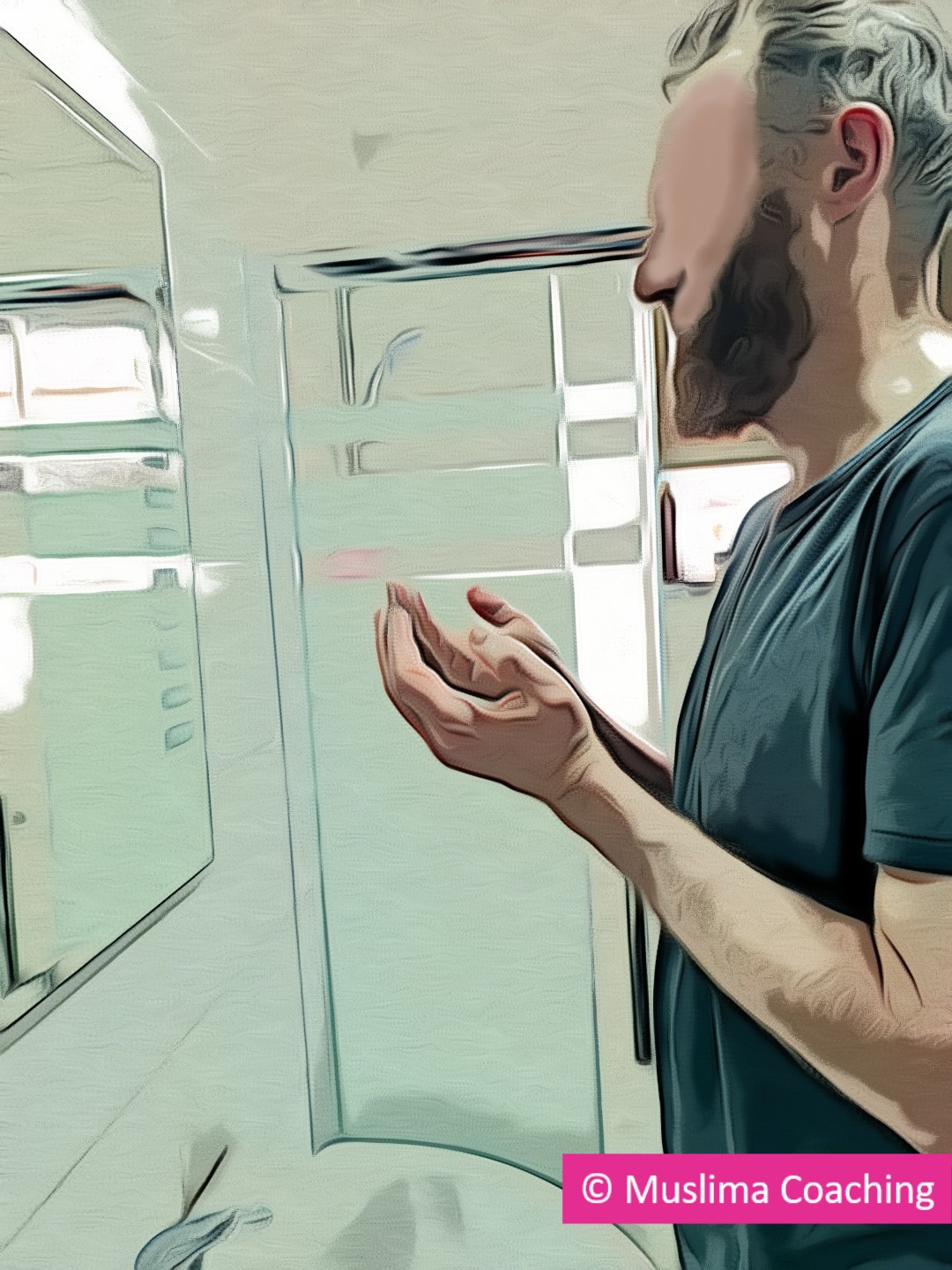
It is also sunna to:
- Follow the exact order of washing the limbs that is stated in the Qur’anic verse [al-Ma’ida, v. 6].
- Perform each act successively, such that the previous limb does not dry before washing the next limb.
- Assist the flow of water by moving the hand along the limb (dalk).
- Avoid wasting water.
Please note that in order for the wuḍūʾ to remain valid and suitable for worship, one cannot do anything that would break the wuḍūʾ while making wuḍūʾ (e.g. pass gas, bleed from a cut, vomit, etc.).
Please refer to these related links for more details:
Step-by-Step Prayer Guide For Muslim Women
The Chronic Excuse Rulings: A Complete Breakdown
Am I obliged to wash away the istihada blood on my clothes before praying?
Check out our courses for women and teens HERE.
References:
- Imam Ala al-Din Abidin, الهدية العلائية
- Imam ibn Abidin, رد المحتار على الدر المختار
- Imam Shurunbalali, مراقي الفلاح شرح نور الإيضاح
- Imam Tahtawi, حاشية الطحطاوي
- Imam Shurunbalali, إمداد الفتاح شرح نور الإيضاح
